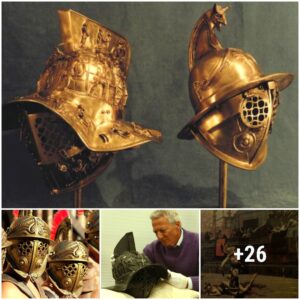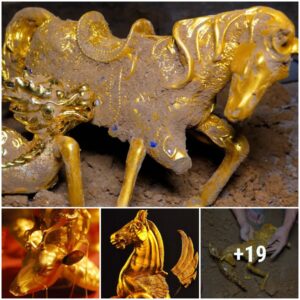The Lost Book of Nostradamus

Who Was Nostradamus?
Nostradamus was born Michel de Nostradame on December 14 or 21, 1503, in the south of France in Saint-Remy-de-Provence. He was one of nine children born to Reyniere de St-Remy and her husband Jaume de Nostradame, a well-to-do grain dealer and part-time notary of Jewish descent.
Nostradame’s grandfather, Guy Gassonet, had converted to Catholicism a half century earlier and changed the family name to Nostradame, in part to avoid persecution during the Inquisition.
Little is known of his childhood, but evidence indicates he was very intelligent as he quickly advanced through school. Early in his life, he was tutored by his maternal grandfather, Jean de St. Remy, who saw great intellect and potential in his grandson.
During this time, young Nostradame was taught the rudiments of Latin, Greek, Hebrew and mathematics. It’s believed that his grandfather also introduced him to the ancient rites of Jewish tradition and the teachings of astrology, giving Nostradame his first exposure to the idea of the heavens and how they might drive human destiny.
Education
At the age of 14, Nostradame entered the University of Avignon to study medicine. He was forced to leave after only one year, however, due to an outbreak of the bubonic plague. According to his own account, he traveled throughout the countryside during this time, researching herbal remedies and working as an apothecary.
In 1522 he entered the University of Montpellier to complete his doctorate in medicine. He sometimes expressed dissension with the teachings of the Catholic priests, who dismissed his notions of astrology.
There are some reports that university officials discovered his previous experience as an apothecary and found this reason to expel him from school. Evidently the school took a dim view of anyone who was involved in what was considered a “manual trade.”
However, most accounts state he was not expelled and received license to practice medicine in 1525. At this time, he Latinized his name—as was the custom of many medieval academics—from Nostradame to Nostradamus.
The Plague Years
Over the next several years, Nostradamus traveled throughout France and Italy, treating victims of the plague. There was no known remedy at the time; most doctors relied on potions made of mercury, the practice of bloodletting and dressing patients in garlic-soaked robes.
Nostradamus developed some very progressive methods for dealing with the plague. He didn’t bleed his patients, instead practicing effective hygiene and encouraging the removal of the infected corpses from city streets.
He became known for creating a “rose pill,” an herbal lozenge made of rosehips (rich in vitamin C) that provided some relief for patients with mild cases of the plague. His cure rate was impressive, though much can be attributed to keeping his patients clean, administering low-fat diets and providing plenty of fresh air.
In time, Nostradamus found himself somewhat of a local celebrity for his treatments and received financial support from many of the citizens of Provence. 1n 1531, he was invited to work with a leading scholar of the time, Jules-Cesar Scaliger in Agen, in southwestern France.
There he married and in the next few years had two children. In 1534, his wife and children died—presumably of the plague—while he was traveling on a medical mission to Italy. Not being able to save his wife and children caused him to fall out of favor in the community and with his patron, Scaliger.
Black Death
Nostradamus and the Occult
In 1538, an offhanded remark about a religious statue resulted in charges of heresy against Nostradamus. When ordered to appear before the Inquisition, he wisely chose to leave Provence to travel for several years through Italy, Greece and Turkey.
During his travels to the ancient mystery schools, it is believed that Nostradamus experienced a psychic awakening. One of the legends of Nostradamus says that, during his travels in Italy, he came upon a group of Franciscan monks, identifying one as the future Pope. The monk, called Felice Peretti, was eventually ordained Pope Sixtus V in 1585, fulfilling the prediction of Nostradamus.
Feeling he’d stayed away long enough to be safe from the Inquisition, Nostradamus returned to France to resume his practice of treating plague victims. In 1547, he settled in his hometown of Salon-de-Provence and married a rich widow named Anne Ponsarde. Together they had six children—three boys and three girls.
Nostradamus had also published two books on medical science by this time. One was a translation of Galen, the Roman physician, and a second book, The Traite des Fardemens, was a medical cookbook for treating the plague and for the preparation of cosmetics, candies, jams — even a love potion.
Within a few years of his settling into Salon, Nostradamus began moving away from medicine and more toward the occult. It is said that he would spend hours in his study at night meditating in front of a bowl filled with water and herbs. The meditation would bring on a trance and visions. It’s believed the visions were the basis of his predictions for the future.
In 1550, Nostradamus wrote his first almanac of astrological information and predictions of the coming year. Almanacs were very popular at the time, as they provided useful information for farmers and merchants and contained entertaining bits of local folklore and predictions for the coming year.
Nostradamus began writing about his visions and incorporating them into his first almanac. The publication received a great response, and served to spread his name all across France, which encouraged Nostradamus to write more.
Nostradamus Book of Predictions: The Prophecies
By 1554, Nostradamus’ visions had become an integral part of his works in the almanacs, and he decided to channel all his energies into a massive opus he initially titled Centuries. He planned to write 10 volumes, which would contain 100 predictions forecasting the next 2,000 years.
In 1555 he published Les Prophesies, or The Prophecies, a collection of his major, long-term predictions. Possibly feeling vulnerable to religious persecution, he devised a method of obscuring the prophecies’ meanings by using quatrains—rhymed four-line verses—and a mixture of other languages such as Greek, Italian, Latin and Provencal, a dialect of southern France.
Oddly enough, Nostradamus enjoyed a good relationship with the Vatican. It’s believed he never faced prosecution for heresy by the Inquisition because he didn’t extend his writings to the practice of magic. His popularity grew and he became one of the most famous figures during the Renaissance.
Nostradamus ran into some controversy with his predictions, as some thought he was a servant of the devil, and others said he was a fake or insane. However, many more believed the prophecies were spiritually inspired.
Predictions of Nostradamus
Nostradamus Predicts Napoleon?
His growing fame made him an in-demand ally of Europe’s elite. Catherine de Medici, the wife of King Henri II of France, was one of Nostradamus’ greatest admirers. After reading his almanacs of 1555, where he hinted at unnamed threats to her family, she summoned him to Paris to explain and draw up horoscopes for her children. A few years later, she made him Counselor and Physician-in-Ordinary to King Henri’s court.
In 1556, while serving in this capacity, Nostradamus explained another prophecy from Centuries I, which was assumed to refer to King Henri. The prophecy told of a “young lion” who would overcome an older one on the field of battle. The young lion would pierce the eye of the older one and he would die a cruel death. Nostradamus warned the king he should avoid ceremonial jousting.
Three years later, when King Henri was 41 years old, he died in a jousting match when a lance from this opponent pierced the king’s visor and entered his head from the eye deep into his brain. He held on to life for 10 agonizing days before finally dying of infection.
Nostradamus claimed to base his published predictions on judicial astrology—the art of forecasting future events by calculation of the planets and stellar bodies in relationship to the earth. His sources include passages from classical historians like Plutarch as well as medieval chroniclers from whom he seems to have borrowed liberally.
In fact, many scholars believe he paraphrased ancient end-of-the-world prophecies (mainly from the Bible) and then through astrological readings of the past, projected these events into the future.
However, not everyone was enamored with Nostradamus’ predictions. He was criticized by professional astrologers of the day for incompetence and assuming that comparative horoscopy (the comparison of future planetary configurations with those accompanying known past events) could predict the future.
How Did Nostradamus Die?
Nostradamus suffered from gout and arthritis for most of his adulthood. In the last years of his life, the condition turned into edema or dropsy, where abnormal amounts of fluid accumulate beneath the skin or within cavities of the body. Without treatment, the condition could result in congestive heart failure.
In late June of 1566, Nostradamus asked to see his lawyer to draw up an extensive will, leaving much of his estate to his wife and children. On the evening of July 1, he is alleged to have told his secretary, “You will not fine me alive at sunrise.” The next morning, he was reportedly found dead lying on the floor next to his bed.
Legacy
Most of the quatrains Nostradamus composed during his life dealt with disasters such as earthquakes, wars, floods, invasions, murders, droughts, battles and plagues. Nostradamus enthusiasts have credited him with predicting numerous events in world history including the French Revolution; the rise of Napoleon and Hitler; the development of the atomic bomb; the assassination of JFK and the September 11, 2001, terrorist attacks on the World Trade Center.
More recently, enthusiasts claim that Nostradamus predicted the rise of COVID-19 when he wrote, “Near the gates and within two cities/There will be two scourges the like of which was never seen. Famine within plague, people put out by steel/Crying to the great immortal God for relief.”
Nostradamus’s popularity seems to be due in part to the fact that the vagueness of his writings and their lack of specific dates make it easy to selectively quote them after any major dramatic events and retrospectively claim them as true.
Some scholars believe he was not writing to be a prophet but writing to comment on events of his time and the people in it. Whatever his method or intentions, Nostradamus’ timeless predictions continue to make him popular to those seeking answers to life’s more difficult questions.
Sources
Nostradamus (1503-1566). Jewish Virtual Library. Nostradamus. Internet Sacred Text Archive.Perhaps Nostradamus Predicted Coronavirus After All… KQED.





